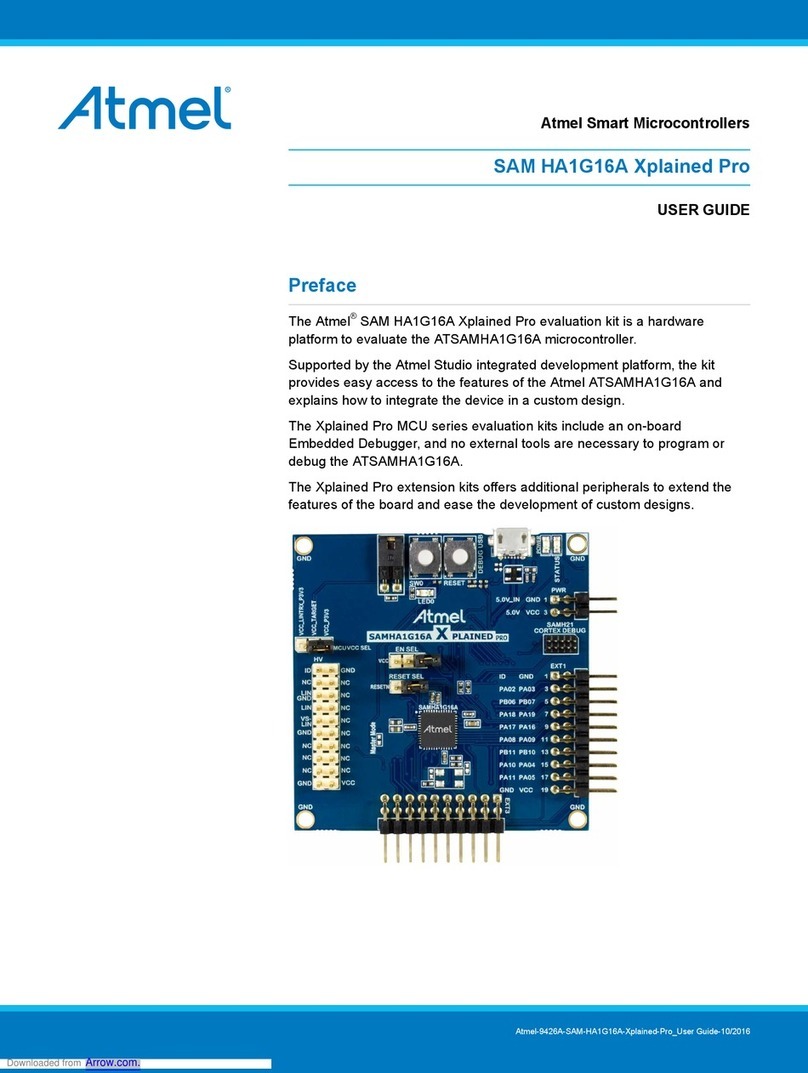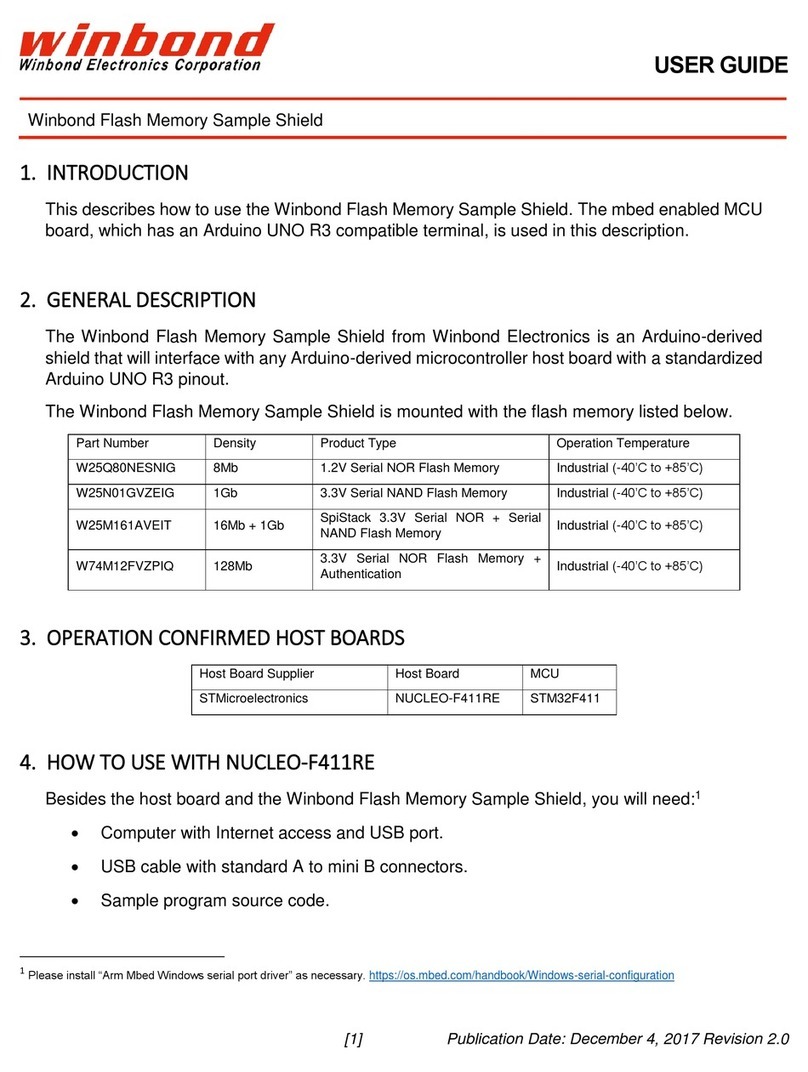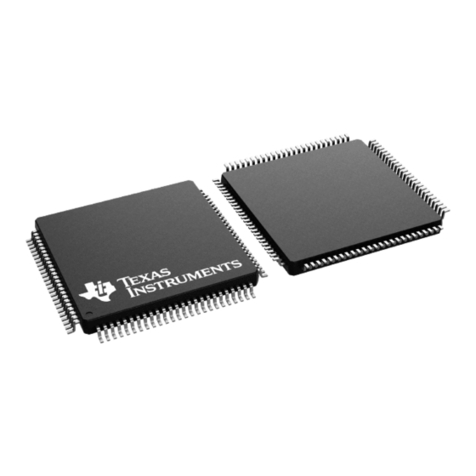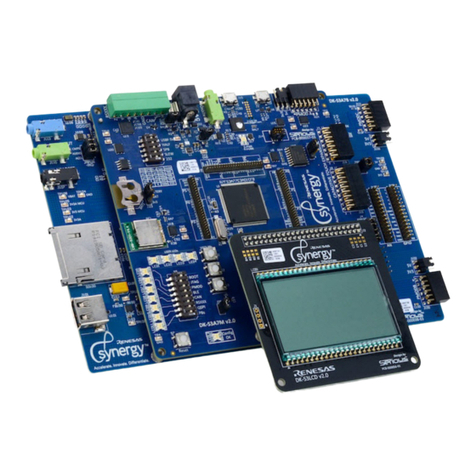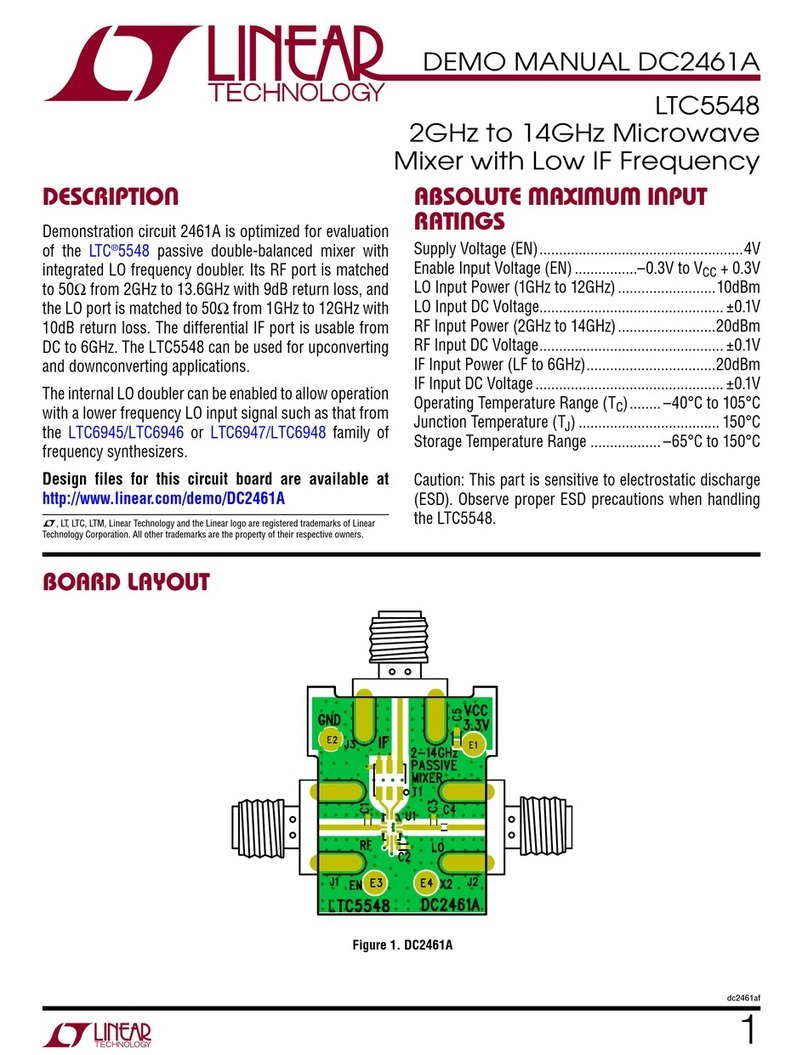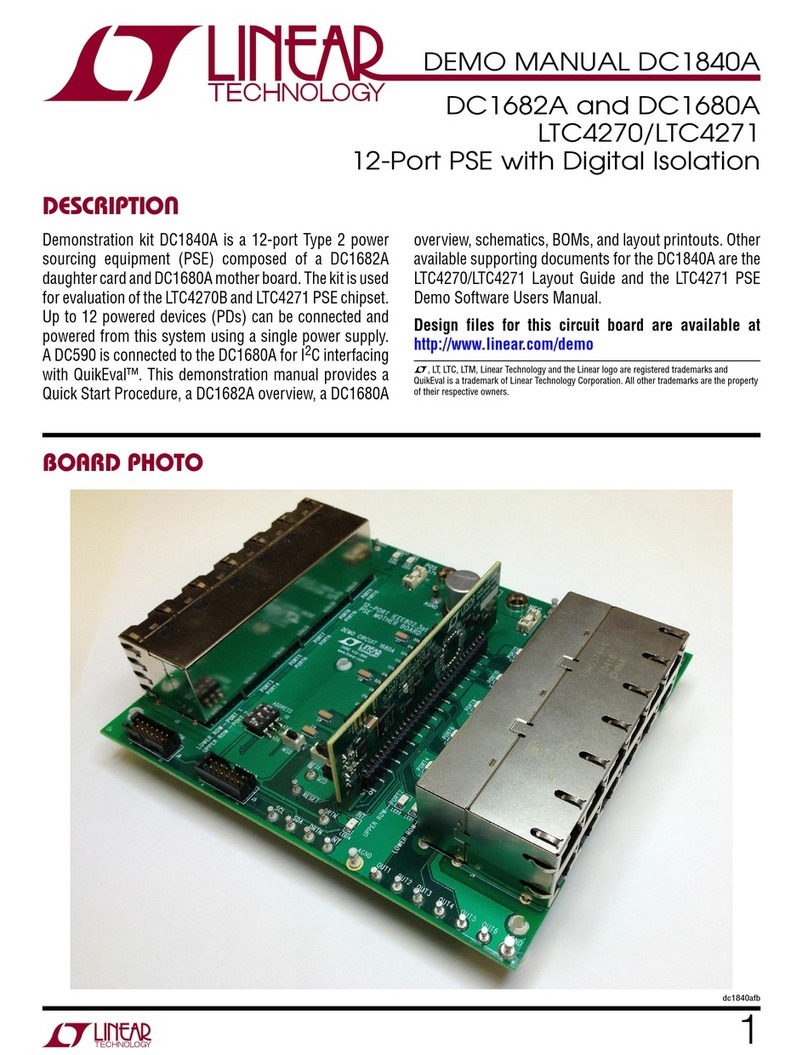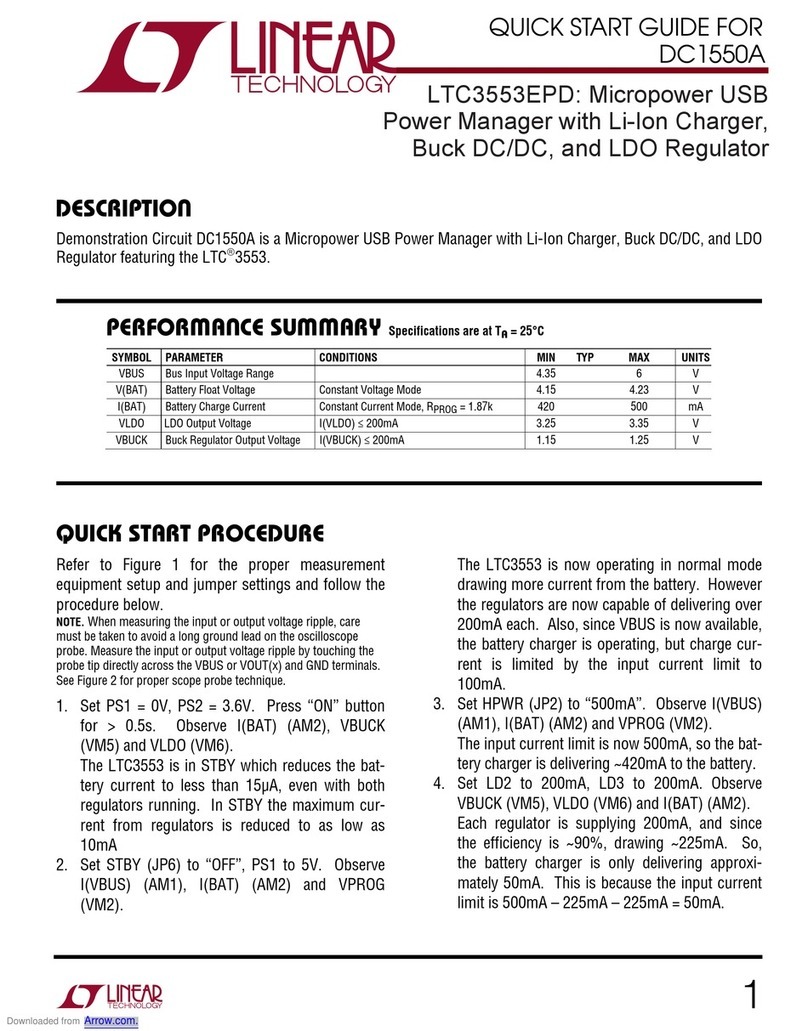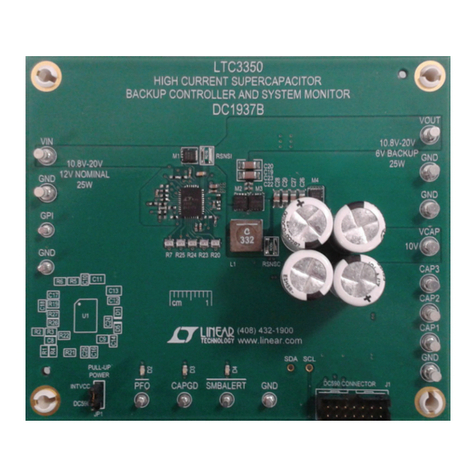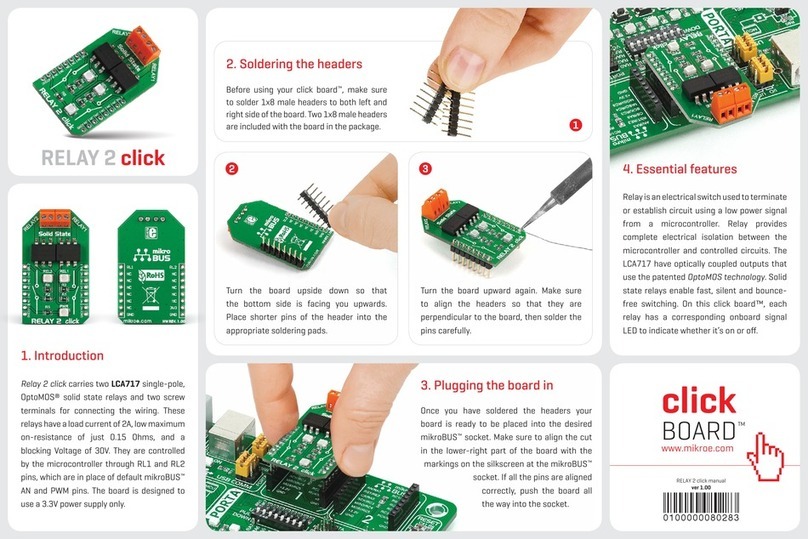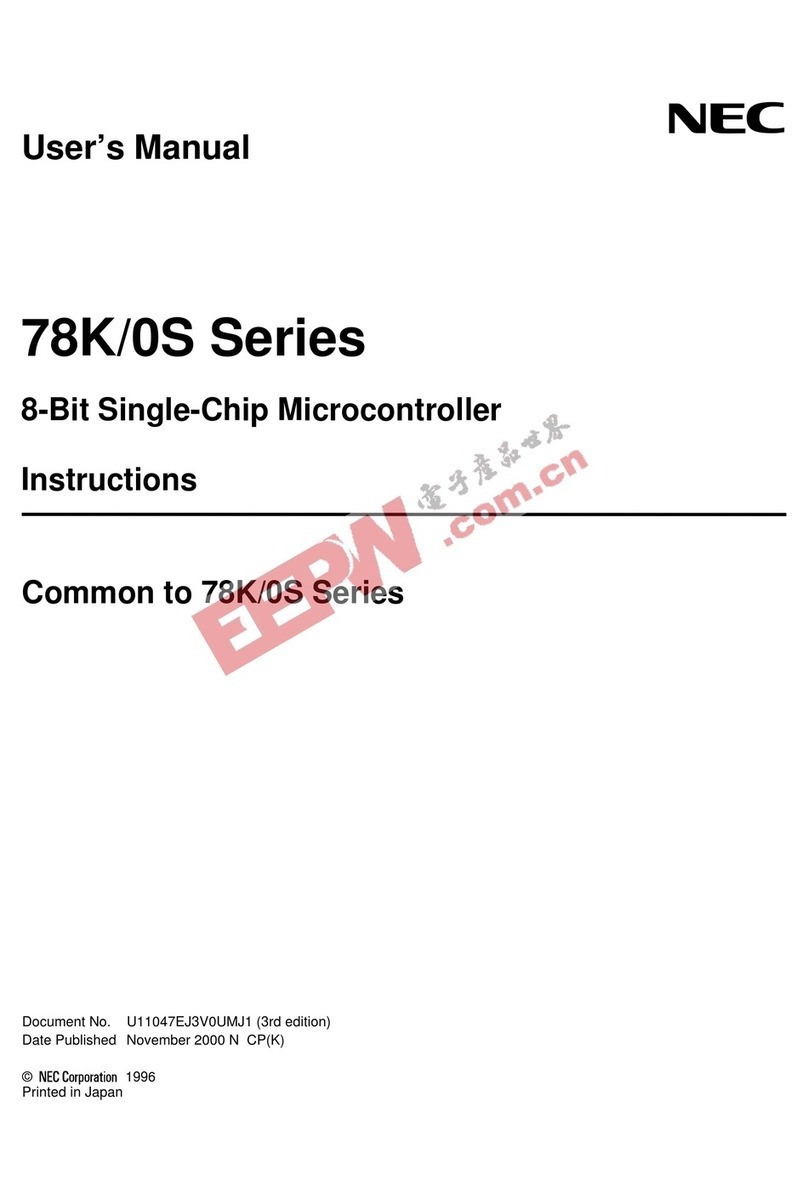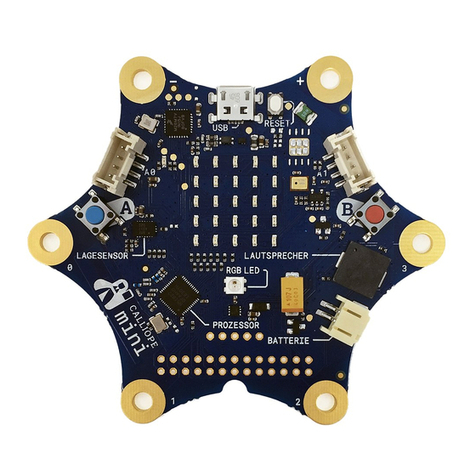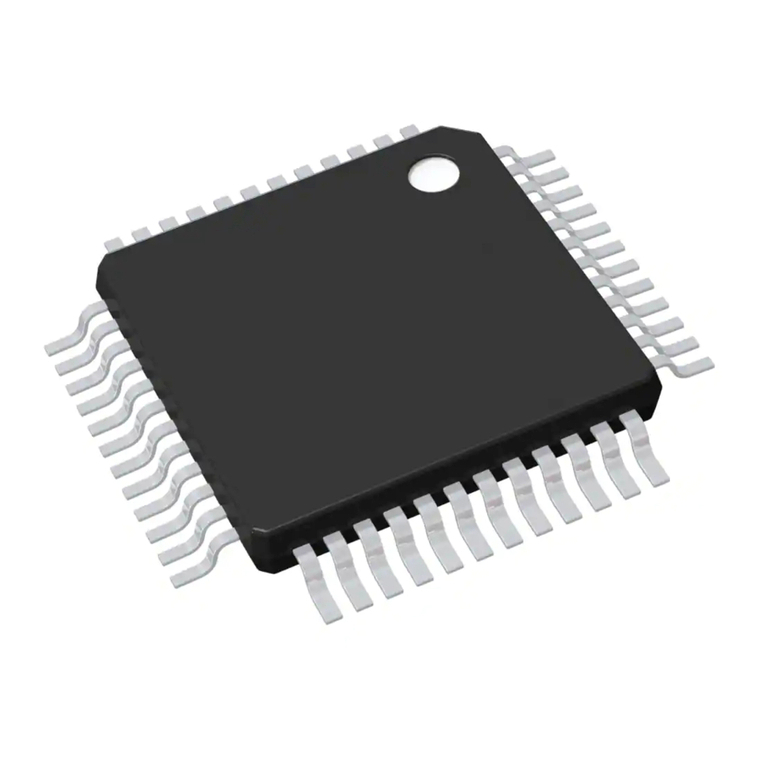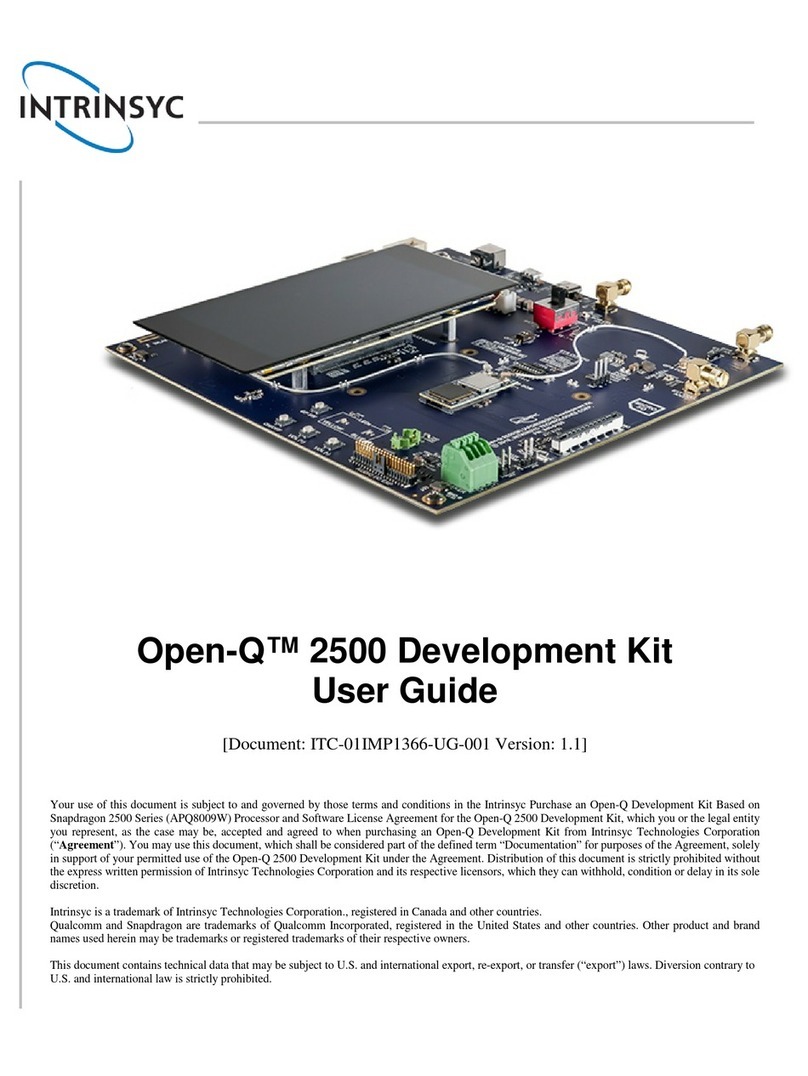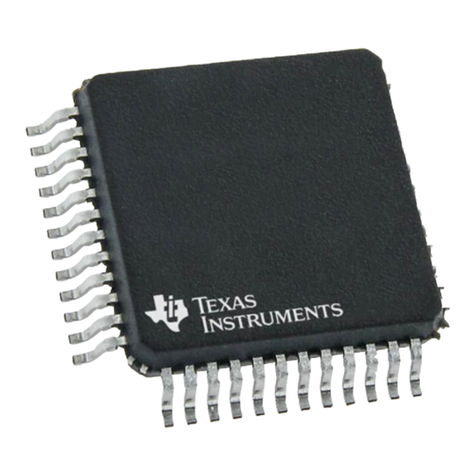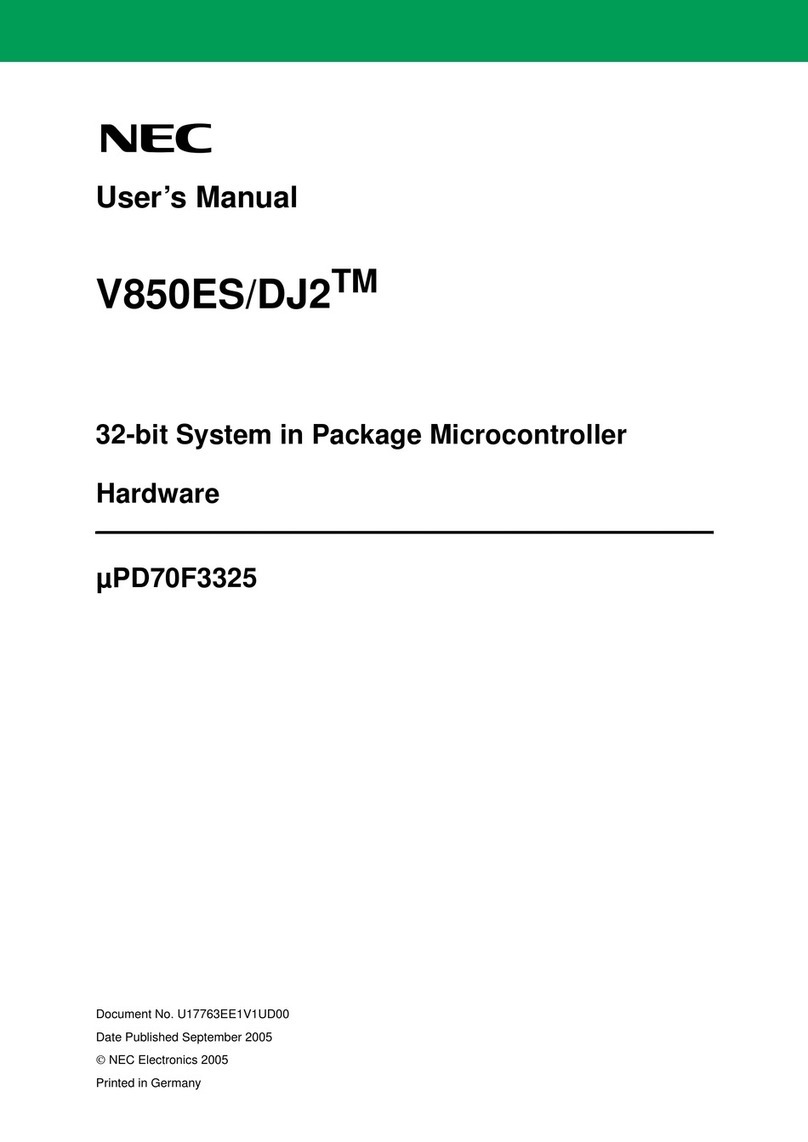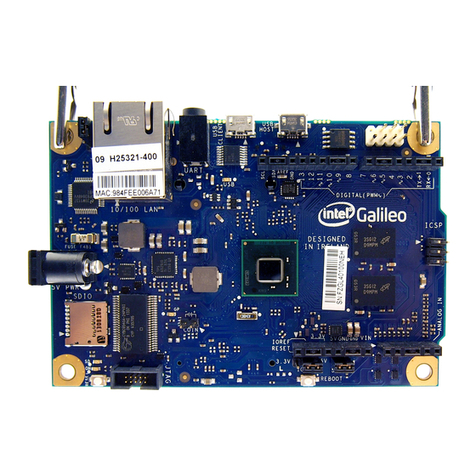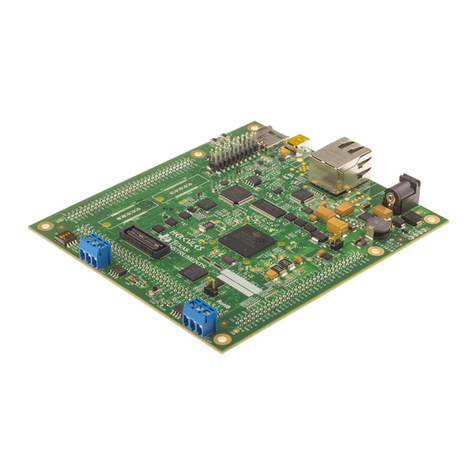
QUICK START GUIDE FOR DEMONSTRATION CIRCUIT 709
DUAL SIM/SMART CARD POWER SUPPLY AND INTERFACE
3
RUNNING THE APPLICATION
The program consists of an enable button (ENA)
used to bring the part out of shutdown, mode con-
trol buttons to select the desired channel and volt-
age level, a reset button (RST), a button to apply
the selected settings and a button to request an An-
swer-To-Reset (ATR).
Card/Voltage – These buttons are used to select the
desired card socket and voltage level. The follow-
ing table lists the M1 and M0 values and their re-
sulting card and voltage settings:
ENA – This button brings the LTC4557 out of shut-
down mode. The selected card socket will be pow-
ered per the startup sequence when ENA is set to
“1” and the Apply Settings button is pressed.
RST – Setting this button to “1” will send a reset
signal to the selected card socket when the Apply
Settings button is pressed.
Apply Settings – This button will set the inputs to
the LTC4557 to the values selected by the M0, M1,
ENA and RST pins. The values sent to the LTC4557
will not change until this button is pressed.
Get ATR – Pressing this button will send a reset to
the selected card socket, and display the ATR in the
box representing the selected card. This button is
independent of the RST button and does not require
RST to be set to “1.” A valid card must be inserted
into the card socket for an ATR to be displayed.
STANDALONE OPERATION
The DC709 may be used independently of the
DC590A This is particularly useful for evaluation of
the LTC4557’s electrical specifications and activa-
tion/deactivation sequences. The LTC4557 demo
program cannot be used without the DC590A in this
mode, however.
To use the DC709 as a standalone evaluation board,
set the three jumpers on the board to “EXT.” This
will enable the user to power the circuit via the
power supply terminals. Connect a power supply to
the EXT VBATT, EXT DVCC and GND terminals on
the board.
An external clock signal may be applied to the EXT
CLK terminal. M1, M0, ENABLE and RSTIN may be
set by supplying signals directly to the testpoints on
the board.
